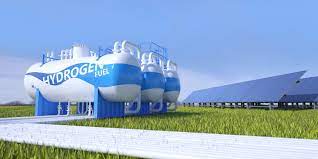From Article by Brad McElhinny, WV Metro News, Oct. 31, 2023
Hope Gas is further describing its role in a hydrogen hub that is a multi-pronged public and private investment in the Appalachian region. Although a federal investment of almost a billion dollars was announced with a splash just a few weeks ago, specifics about aspects of the project have been taking shape more gradually.
Hope Gas intends to partner with WATT Fuel Cell Corp to produce hydrogen from natural gas for Hope’s local distribution system and residential fuel cells. A WATT fuel cell is being installed at the Hope Gas headquarters in Morgantown. The company that makes the fuel cells is working to build a construction facility. (Another partner is the gas company EQT.)
Hope aims provide fuel cells to West Virginian homes starting in 2024, ramping up over the next three years. Hope Gas plans to leverage federal grant dollars under the ARCH2 hydrogen hub project to reach a total of 5,300 WATT Fuel Cell potential customers.
“There’s only one project that DOE is funding that is bringing hydrogen into the home,” said Morgan O’Brien, chief executive of Hope Gas on MetroNews’ “Talkline.” ~ “We have this one, unique project and the punchline of it is we’re not only partnering with the government but partnering with the technology business. So we have a company that makes a fuel cell that can burn hydrogen. It can also burn natural gas as well, and it can be put in your home and basically act either as a backup generator or actually help you, basically, come off the grid at some point and use the fuel cell to be one of your sources of energy.”
Hope says West Virginia is in the top three states with electric reliability issues and that many residential customers rely on backup generators. The company says fuel cells will use a home’s access to the existing, reliable natural gas infrastructure to provide affordable, reliable power. If customers currently have a generator, Hope officials say, installation of a fuel cell will be very simple.
With such a system, natural gas is converted to hydrogen, which in turn is converted to electricity using a chemical reaction similar to a battery. No nitrogen oxides (NOx) or sulfur oxides (SOx) are emitted from fuel cells, according to Hope.
Out of the box, Hope says, fuel cells can use a blend of natural gas and 20% hydrogen. They can be converted to use 100% hydrogen. In addition, according to Hope, fuel cells can be paired with solar panels to charge the batteries to provide additional power to homes.
“You could theoretically be buying hydrogen in your home, putting a fuel cell in your home and creating green energy in your home in West Virginia,” O’Brien said. He added, “We think once people learn about them and particularly with the hydrogen hub subsidy, these are going to be very compelling for most families.”
Shawn Bennett, division manager for energy and resilience at Battelle, one of the companies at the center of the hydrogen hub’s development, described the Hope project during an online public meeting last week.
He described it as “finding those communities who may have electricity that kind of goes in and out, providing them an opportunity for backup power — something that is reliable and something they can use all the time.”
The hydrogen hub project means having interconnected projects to produce hydrogen power, store carbon dioxide emissions and use the hydrogen power for activities like transportation or data storage.
President Joe Biden and officials with the U.S. Department of Energy on Oct. 13 announced the Appalachian hydrogen hub and six similar projects across the nation. The total federal support is $7 billion, with the Appalachian project in line for $925 million of that. Private investment is already lining up and will put up billions more in financial support.
Appalachian counties in Ohio and Pennsylvania are also participating in the hub. Officials said the project is geared toward the rich supplies of natural gas in the region, although some aspects of the project also rely on producing “green hydrogen” from renewable sources.
Other aspects of the hub include:
# — a CNX/Transgas ammonia production facility in southern West Virginia.
# — two TC Energy/Chemours facilities in the mid-Ohio Valley and Kanawha Valley to produce hydrogen through electrolysis.
# — a Fidelis/Mountaineer Gas “GigaSystem” site in the mid-Ohio Valley to use natural gas and biomass to produce hydrogen for data centers and other consumers.
# — a Hog Lick Aggregates site in north central West Virginia to use hydrogen to fuel delivery trucks, haul trucks and equipment.
# — an Empire Diversified Energy site at the tip of the Northern Panhandle producing hydrogen through anaerobically-digested food waste for industrial and transportation fuel.
# — and a Plug Power/Amazon site in northern West Virginia to produce “green hydrogen.”
“It’s going to be a long journey before we figure out all the challenges with hydrogen,” O’Brien said. “At the same time, West Virginia is rich with natural gas, so it’s not like we’re not rich and plentiful with affordable energy here and clean energy. I’m a big believer that you want to define the future, so I think it’s important for companies like Hope Gas to be engaged with hydrogen.”

